Every morning when school is on break, the playgrounds of Bobo-Dioulasso in Burkina Faso, West Africa, welcome dozens of children playing soccer. In Colma, one of the popular districts of the city, every little boy dreams of becoming a soccer star in the image of Lionel Messi, the Argentine striker of FC Barcelona.
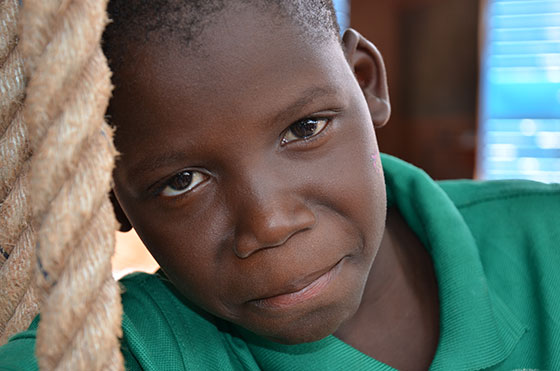
To his friends and playmates, Mamadou is a talented striker who tirelessly practices his mastery of the art of soccer several hours each day. However, on one beautiful morning, Mamadou didn’t join his friends on the playground.
Earlier that morning, he had a high fever, didn’t eat any food and began to vomit. Alerted by this sudden uneasiness, Mamadou’s mother, Mariam, hastened to take her son to the medical center to see a doctor.
Sitting on the back of the bicycle, clutching his mother’s dress tightly, Mamadou quivered throughout the 10km-long ride from their house to the public health center. His mother had only one thought: She hoped her son did not have malaria.
The Colma Medical Center was built by the Church of the Assemblies of God of Colma. It is the only medical center for the thousands of residents in this community.
Dr. Geraldine Nanema, head of the center, said, “[Since its opening,] the medical center has seen around 600 to 700 malaria patients monthly. Over the past month, we had 877; those figures may increase considerably this month if trends continue. Many of these cases of malaria are reported to us only at an advanced and often fatal state.”
For more than three years, Dr. Nanema had personally monitored Mamadou’s health, along with that of the other 300 registered children at the local Compassion child development center (CDC).
Located in the community of Colma since 2007, this CDC works daily to deliver each registered child from the clutches of poverty and disease.
Team leader Jonas Sawadogo says, “As they say, poverty is nothing other than a lack of opportunities. We work to make opportunities available to children and their families. We work to give them the opportunity to stay healthy in order to continue the development cycle that our program offers them.”
To ensure better resilience to the malaria endemic, the center decided to tackle the root of the problem through prevention.
Malaria prevention can be achieved through behavioral changes at both the individual and community levels.
Thus, the center developed an awareness campaign, a first step in their hard-fought battle against malaria. To transfer knowledge and raise awareness, Jonas’ team held home visits with each family to discuss good malaria prevention practices to adopt, according to the realities of every family visited.
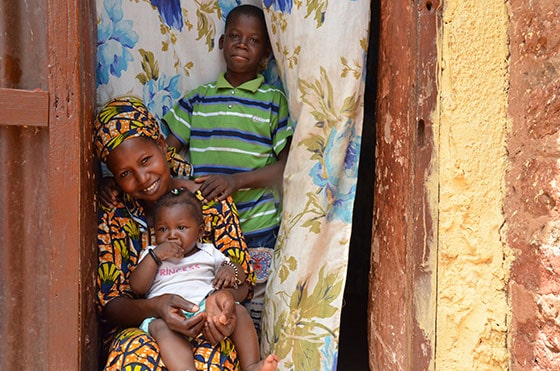
While visiting Mamadou and his family last year, Jonas and his team noticed a huge proliferation of grass, pits of stagnant water and sewage, and mosquitos. Mamadou regularly fell ill with malaria, notably due to his high exposure to the mosquitos that had made their home in the grass in the yard.
The team was able to help several families get rid of stagnant water that housed thousands of mosquito larvae. They also removed weeds and sprayed insecticides in gutters that abounded with larvae.
“These measures have helped destroy mosquitos, the only vectors of the disease,” says Ms. Dakiss Pelagie, health specialist of the CDC. However, protection is an ongoing activity that must be maintained daily.
To further increase its assistance and ensure greater impact in the lives of the beneficiaries, Jonas and his team received funds from our Complementary Interventions Program to distribute mosquito nets and impregnated curtains to registered children and their families. The quality of these nets was far superior to nets sold in local pharmacies.
“These nets provide full protection when used according to the instructions,” says Dr. Nanema.
Depending on their needs, each registered child’s family received mosquito nets. Of the mosquito nets they received, one must always be used to cover the bed of the registered child, then one for their siblings and one for their parents. Thus, a total of more than 600 mosquito nets were distributed to the families.
As part of the intervention, all other projects of the Bobo-Dioulasso cluster also received batches of nets according to the numbers of their registered children and families. Each CDC conducted awareness sessions and distributed mosquito nets to the families.
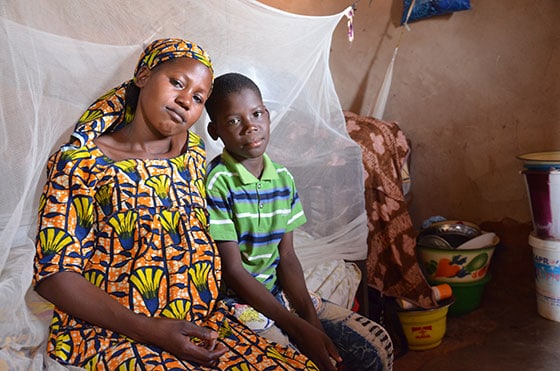
Mariam says, “My children and I received two nets. My youngest child and I sleep under one net. Mamadou and his cousins, who sleep next door with their grandmother, have the other net to sleep under together.”
For several months now, Mamadou, his siblings and their mother have slept comfortably, effectively protected each night.
“These nets have done immense good to me and my family,” declares Mariam. In the past, several cases of malaria had resulted in hospitalizations and high expenses for their family.
Tomorrow morning, Mamadou will be the first player on the soccer playground — imagining he is scoring more goals and celebrating his way to becoming the greatest player of his country and of Africa. As long as he remains protected against this life-claiming disease, Mariam knows her child’s dream is possible.



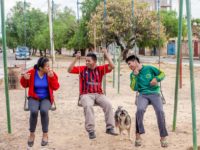
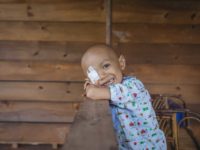


1 Comment |Add a comment
The reality is that Malaria is a killer and the cause of poverty prevalence in Africa. If there is a way we can eradicate Malaria, we will be eradicating poverty to a large extent.